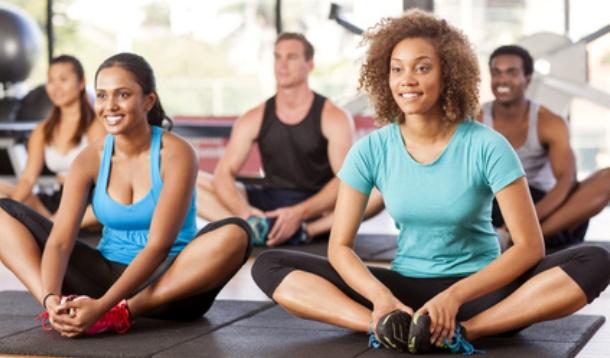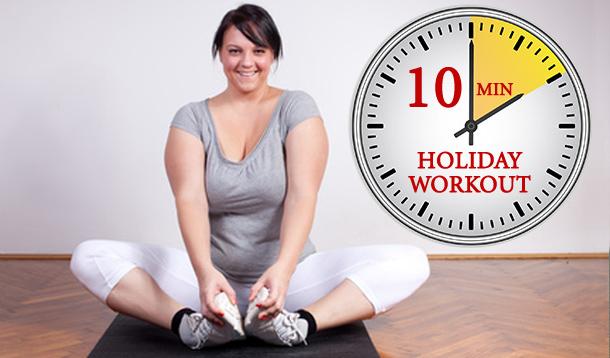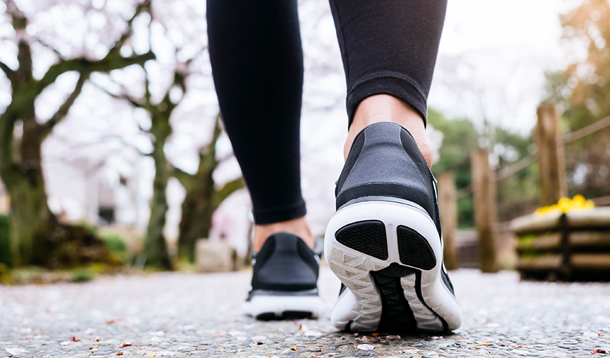
It's noon at the gym. Don't hit me with a thousand "you're sexist" comments—because I've got some perspective on this industry—but most of the female members will be found in the fitness or spinning or yoga studio enjoying an instructor-led class. Fitness classes are a great way to add long cardio sessions to your repertoire, and sometimes (depending on the type) supervised strength training at a lower cost than working one-on-one with a trainer. But if you're in the same step class Monday through Friday, or you know the spinning playlist better than your instructor, you might be overdoing it.

One thing I do point out to her on a regular basis is that it's important to put your max effort into those fitness classes you love so much. A fitness class can be a great way to hack through an hour of cardio—an hour you might not get through if not for the catchy tunes, the creative choreography, and the pert little instructor screaming out orders. So, take your fitness classes, if you must. Just mix it up once in a while with a new class (particularly, strength training classes please!) and work hard while you're in there!
If you give it your all, you can burn a lot of calories in just an hour.
Here's how some of the most popular forms of fitness classes stack up:

Study after study after—admittedly—redundant study has proven that you can achieve almost all of the same benefits of traditional exercise by breaking your work outs down into 10 minutes. You just have to know how to do it!
This time of year is full of pressure! Fun pressures like finding time to decorate the tree or meet old friends for a bottle glass of wine, and not-so-fun pressures like finding time to bake three dozen cookies for the school winter fair or drive two hours for Hanukkah dinner at your in-laws. Don't give up! You can battle holiday weight gain AND de-stress with a quick workout. May I suggest scheduling it any time between waking in the morning and wine o'clock? There are countless chances in a day to squeeze in 10 minutes of sweat.
Here’s a 10-minute work out you can do at home—no equipment required—that will deliver a combination of strength and cardiovascular training to burn fat, improve your cardiovascular health, ease stress, and build strength! If you can’t time yourself, do about 10-20 reps or as many as it takes to reach a level of fatigue—“fatigue” means you couldn’t comfortably do any more reps with good form.
Minute 1 - cardio
Run stairs, do jumping jacks, run on the spo,t or do anything that uses your whole body and gets your heart rate up!
Minute 2 – upper body & core
T push up: On your knees and hands, do a push up, then lift one arm and twist to a side plank position; hold briefly, then lower back to push up position. Repeat with other arm to complete one rep.

Minute 3 – lower body & core
Prisoner squat: With hands on head and feet shoulder width apart, squat until thighs are parallel with floor; hold 1 count, then return to standing.

Minute 4 – upper body & core
Plank: On forearms and toes, hold “plank” position for one minute or 2 reps of 30 seconds each if one minute is too difficult.

Minute 5 – cardio
Run stairs or do jumping jacks at a high intensity to get your heart rate up.
Minute 6 & 7 – lower body & core
Split squat: Place 1 foot on a chair or stair & stand in split position, hands on hips; bend knees and squat until front thigh is parallel with floor; hold 1 count & rise. Complete 1 minute on each leg.
Minute 8 – upper body
Push up: On hands and knees or hands and toes, begin with straight arms and bend elbows to lower yourself until upper arms are parallel with floor; hold briefly & push up.

Minute 9 – core
Pike crunch: Lay on back with legs and arms extended straight up in air; curl shoulders off floor and reach fingertips toward toes; hold briefly, lower & repeat.

Minute 10 – cardio
Run stairs or do jumping jacks at a high intensity to rev your heart rate 1 last time!
Way to go! You may now commence wine drinking.
Got 20 minutes? Do the work-out twice for an even bigger strength and cardio challenge. This short work-out is also fantastic to tack onto the beginning or end of your usual power walk, jog, or bike ride and can be done anywhere—gym, home, cottage, local park. You may do this work out 5 days per week or do it twice (either twice through in 20 minutes or twice daily in two 10-minute segments) every other day. Keep up your other activity—walk with baby, play soccer with the kids, take your yoga class—it all adds up.
What's your holiday go-to workout when time is tight?
For more ideas, try this at-home 10 minute workout.
Get a killer lower body workout with this at-home leg routine.

Walking is one of those great equalizers. Most able-bodied people can walk for exercise, even if they are limited by conditions, injuries, or a lack of fitness to walking alone. Walking provides fantastic toning for the lower body and builds cardiovascular endurance with minimal pressure on your joints. And most people LOVE walking! Walking gets you places, keeps you fit, and entertains you. But have you ever been out for a lovely, brisk walk only to be blown past by a runner (or, worse, a pack of runners) and felt entirely not. good. enough?
Freaking runners...all sleek tights, lightning-focused, and deficient of body fat... pushing through pain in the pursuit of higher fitness... why can't that be you? Well, it can, walker. It can.
First you must understand the difference between walking to get to the corner store and walking for fitness. Walking to get to the corner store gets you off your ass and equipped with that milk you need for your tea. Walking for fitness feels challenging, makes you winded just like any other cardiovascular activity, and gives you a great burn in the legs and butt. The key is to exercise at an intensity that feels challenging for you. As trainers, we use the Rating of Perceived Exertion Scale, a scale of 1-10 (or 6-20 sometimes, but let's keep it simple) that describes the intensity of a particular exercise for the exerciser. That's you, by the way. A warm-up walk or walk to the store on a cold day when you don't want to linger would be about a level 3-4 on the RPE scale. A brisk walk with the dog that you can maintain at a steady state for a half hour or more is probably about a 5-6 on the RPE scale. Hitting that big hill you usually try to avoid without slowing down might take you up to a 7-8 on the RPE scale for a minute or two. You get the idea.
Knowing how hard to push yourself is key, and by pushing yourself you can use walking to reap most of the same benefits those smug runners are enjoying. But what if a walk just doesn't thrill you anymore? Feels too easy? Doesn't get your heart rate & RPE up the way it used to when you were less fit? Or suppose you are used to higher impact exercise and are restricted to walking, either temporarily or permanently due to an injury? How can you get that muscle burn you crave and athletic body you want from walking?
Simple. Add High-Intensity Interval Training to your walks, 2-3 days per week. High-intensity intervals are proven to burn more fat, improve cardiovascular capacity and prevent metabolic syndrome & type-2 diabetes far better than steady-state exercise. That includes steady-state running, people. So the next time a half-marathoner chugs past you in the park, you can be just as smug. Not to mention you're home eating lunch before she has even hit her turnaround point.
Use these walking interval programs two to three times per week after warming up, based on your own RPE, to take your walking—and your fitness—to the next level:
Want to up the ante even more?
Go get em, walkers!